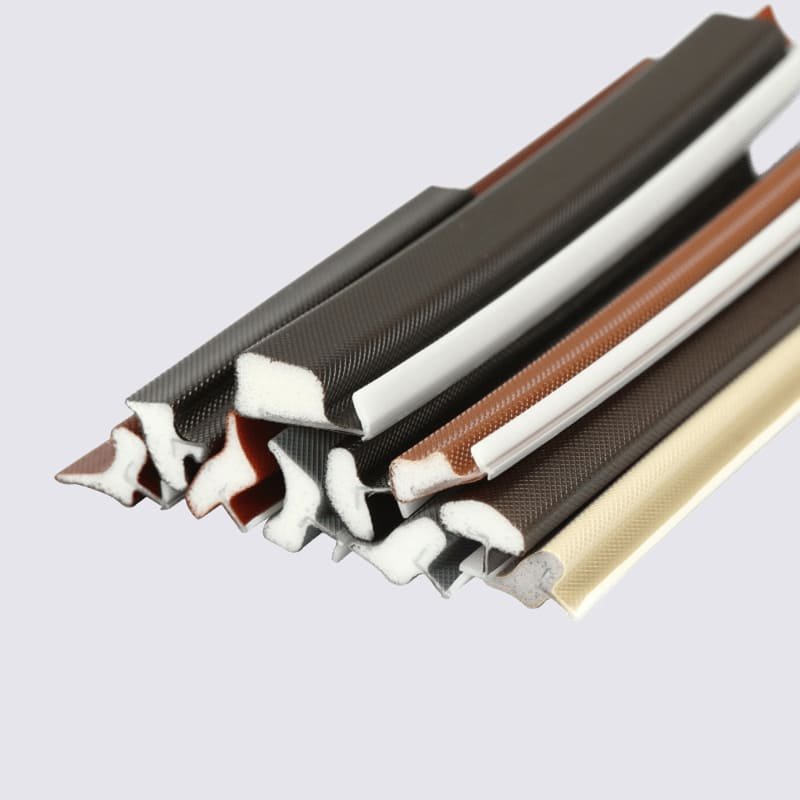Rubber edge trims dogge in protte dingen. Se beskermje, segel, en ferbetterje alle soarten oerflakken. Se beskermje tsjin wearze, tear, ynfloed, en de eleminten. Se meitsje auto's, fabryken, en huzen feiliger en duorsumer. Rubber edge trims kinne makke wurde om alles te passen, sadat elke yndustry se nedich hat.
Rubberen rânen binne beskermjende strips dy't jo op bleatstelde rânen sette om te foarkommen dat se skea wurde, om se te fersegeljen, en om se better te sjen. Se wurde normaal makke fan in fleksibel materiaal lykas EPDM, wat geweldich is, om't it resistint is foar waar, ferâldering, en ozon. Jo sille dizze dingen fine op alles fan autopanielen en doardichtingen oant meubelrânen en yndustriële apparatuer.
No, lit ús dûke yn wêrom râne beskerming is wichtich, de ferskate applikaasjes foar rubber trims, en hoe't jo de juste selektearje en ynstallearje foar jo projekten.
Wat is Rubber Edge Trim?
Rubber edge trim is in fleksibele, beskermjende moulding dat past oer bleatsteld rânen op panielen, doarren, finsters, en oare struktueren. Makke fan duorsume materialen lykas EPDM en neoprene rubber, dizze trims ferset waar, ozon, en fysike wear. Dêrom binne se de bêste kar foar applikaasjes dy't goed moatte útsjen en geweldich wurkje. Minsken brûke se op autodoarren, yndustriële apparatuer panielen, en foar dekorative rânen.
Soarten Rubber Edge Trim
- U-kanaal Rubber Edge Trim U-kanaal trims wurde karakterisearre troch harren "U" foarm, ûntworpen om bleatstelde rânen strak te gripen en te dekken. Se wurde in soad brûkt yn automotive applikaasjes te beskermjen metalen rânen op doarren en panielen. Wichtige foardielen omfetsje skokabsorption, redusearre wear, en ferbettere duorsumens. Dit type komt ek foar yn keukenapparatuer, beskermje tsjin skerpe rânen om feiligens te garandearjen en in glêde finish te leverjen.
- E-foarmige rânebekleding E-foarmige trimmen jouwe in unyk dichtprofyl, faak brûkt foar lûdisolearjen en ferminderjen fan trillingen. Har ûntwerp makket se ideaal foar tapassingen dy't in strakke seal fereaskje, lykas finsters en doarren yn yndustriële en wenwiken. Se biede poerbêst waar ferset, garandearjen fan langduorjende prestaasjes yn easken omjouwings.
- D-foarmige râne Trim Dizze trimmen hawwe in rûn "D" profyl, faak brûkt foar cushioning en sealing. Se binne populêr yn doarframes en lûken foar auto's fanwege har sterke dichtingseigenskippen en it fermogen om effektyf te komprimearjen en werom te setten.
- D-foarmige trimmen kinne werhelle kompresje wjerstean, wêrtroch se heul duorsum binne yn ynstellings foar faak gebrûk.
- Edge Trims mei Side Seals Edge trims mei yntegrearre kant sealen kombinearje beskermjende dekking mei effektive sealing. Se wurde wiidweidich brûkt yn tapassingen dy't sawol rânebeskerming as sealingmooglikheden fereaskje, lykas lûken, ynsletten, en waar-eksposearre komponinten. Dizze trimmen foarkomme it binnendringen fan stof, wetter, en oare kontaminanten, it ferbetterjen fan totale produktprestaasjes.
Foardielen fan Rubber Edge Trims
Beskerming tsjin ympakt en slijtage Rubberen rânen binne geweldich foar it beskermjen fan oerflakken tsjin meganyske ynfloed, dy't helpt om har libben te ferlingjen. Dat is benammen wichtich yn gebieten dêr't in soad ferkear krije of dy't bot brûkt wurde.
Ferbettere uterlik en finish troch rûge as skerpe rânen te dekken, rubberen trims jouwe in moai, klear uterlik dat ferbetteret it uterlik fan in protte ferskillende dingen.
Sealing en isolaasje In protte rubber edge trims hawwe ynboude sealing mooglikheden, wat betsjut dat se kinne isolearje tsjin focht, loft, lûd, en oare dingen. Dit makket se perfekt foar alles, fan it fersegeljen fan jo auto oant it dichtsjen fan in yndustriële omwâling.
Kosten-effektyf en lang duorje Om't rubberkantstrimmen sa duorsum en waarbestindich binne, se sille besparje jo jild op 'e lange doer omdat jo net hoege te reparearjen of ferfange se sa faak.
Applikaasjes fan Rubber Trim foar Edge Protection
Rubber trims wurde brûkt yn in ferskaat oan yndustry en tapassingen:
- Automotive: Se foarkomme skuorkes op autodoarren, seal finsters, en cover bleatsteld rânen binnen vehicles.
- Yndustriële apparatuer: Rubber trims wurde brûkt om masineûnderdielen te beskermjen tsjin ynfloed en miljeuskea.
- Household Projects: DIYers brûke rubberen trimmen om bleatstelde rânen op meubels te dekken, countertops, en mear, ferbetterjen fan feiligens en uterlik.
Faktors om te beskôgjen by it kiezen fan rubberen rânen
It juste materiaal kieze Ferskillende materialen biede ferskate nivo's fan duorsumens, fleksibiliteit, en ferset. Bygelyks, EPDM rubber is geweldig foar waar-resistant applikaasjes, wylst neopreen is poerbêst foar ferset petroleum-basearre stoffen.
Tink oer bleatstelling oan it miljeu en wat jo moatte wjerstean Wês wis te tinken oer wat it sil wurde bleatsteld oan, lykas sinneljocht, focht, of gemikaliën by it selektearjen fan in trim.
Tink oan hoe maklik it is om te ynstallearjen It gemak fan ynstallaasje, ynklusyf fleksibiliteit, hoe goed it grypt, en de beskikbere metoaden om it te heakjen, is wichtich by it selektearjen fan de juste rubberen trim.
Ynstallaasje- en ûnderhâld Tips
- Prep: Reinigje de râne foardat jo ynstallearje om te soargjen dat it goed plakt.
- Snije: Brûk krekte ark lykas knipers mei rjochte rânen foar in skjinne besuniging.
- Plak en Feilich: Linje de trim op en druk it hurd oer de lingte om te soargjen dat it plakt.
Gearfetting
Rubberen rânen binne in geweldige manier om beskerming te jaan, duorsumens, en in oantreklike finish foar jo klanten yn in breed skala oan yndustry. Troch it begripen fan de foardielen en tapassingen fan rubber edge trims, jo kinne oan 'e behoeften fan jo klanten foldwaan en har de oplossingen leverje wêr't se nei sykje, wat sil resultearje yn lange-termyn tefredenheid.


